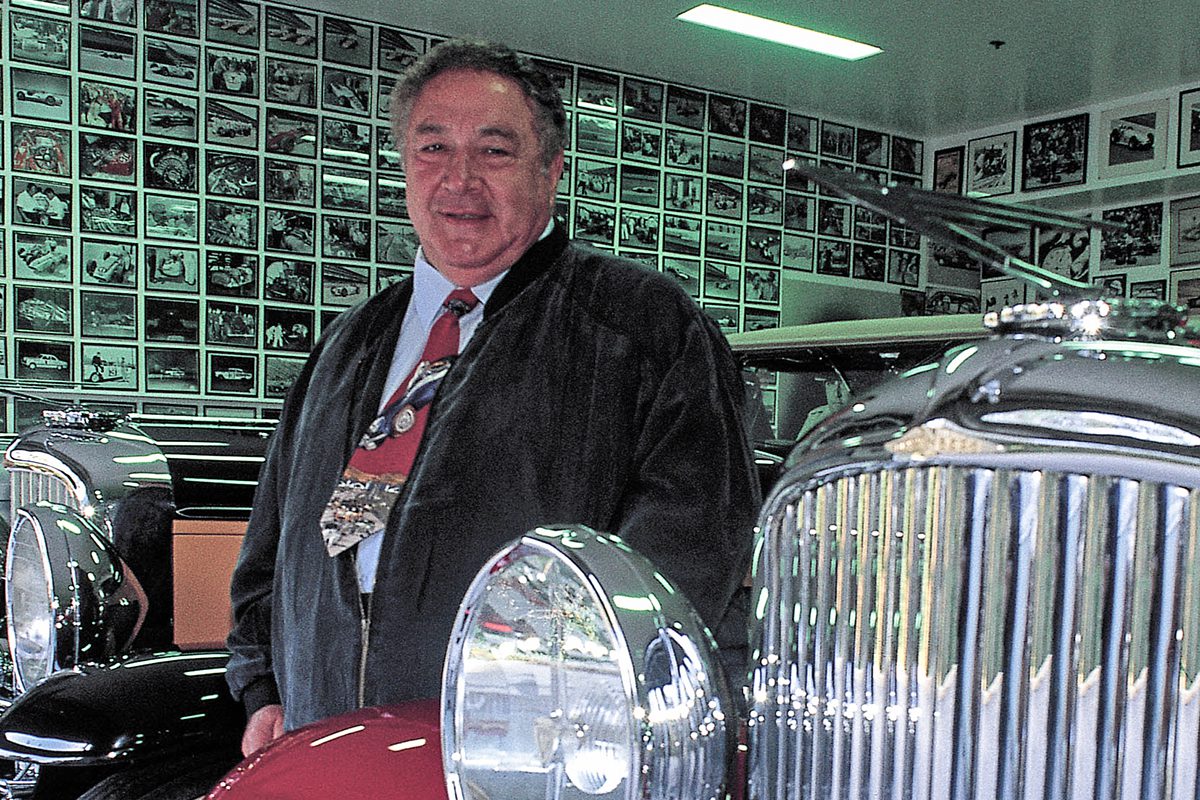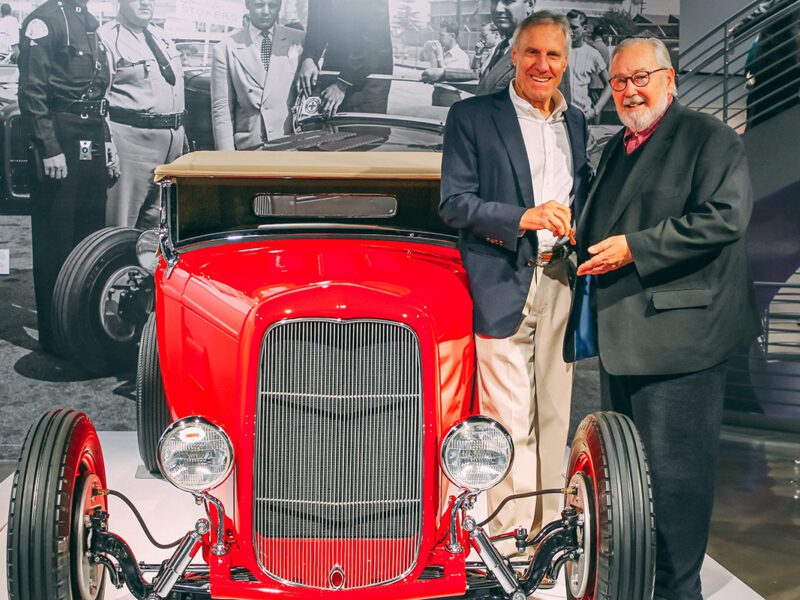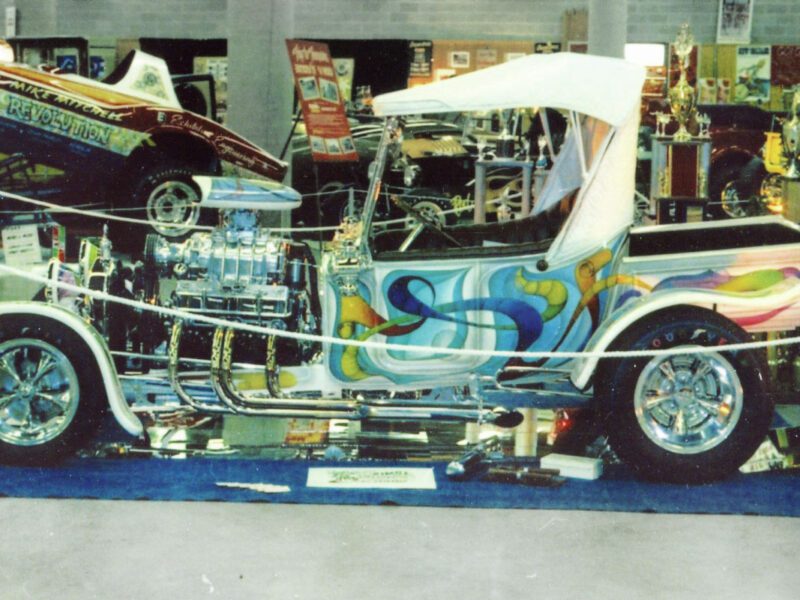Andy Granatelli – Mr. 500 and Oil Additive Maestro
There was a time in the late 1960s when a logo for an unassuming engine oil additive was as ubiquitous as the corporate marks of Coke, IBM, and McDonalds. You could find it everywhere. On dog-eared Pee Chee folders of car-keen teens. On windows of the family station wagon. And, naturally on rocker panels of rumbling Camaros and Mustangs.
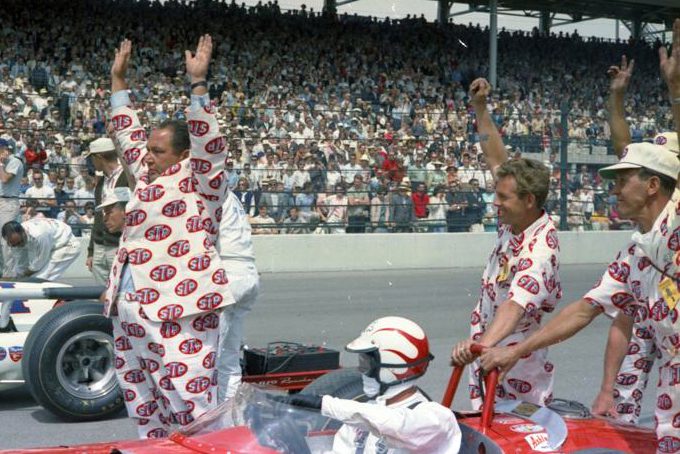 The logo in question is that of STP, a syrupy substance that promised to magically unlock hidden efficiencies inside an internal combustion engine. And the man who made STP famous? The legendary, larger-than-life figure of Andy Granatelli.
The logo in question is that of STP, a syrupy substance that promised to magically unlock hidden efficiencies inside an internal combustion engine. And the man who made STP famous? The legendary, larger-than-life figure of Andy Granatelli.
Now, if Granatelli’s only claim to fame was hyping an oil additive, he wouldn’t be profiled on these pages. But Andy was also a towering figure in motorsports, with roots in the early days of hot rodding.
Anthony Granatelli was born March 18, 1923, in Dallas and grew up in the slums of Chicago. He dropped out of school at 14 and worked in a grocery store for $6 a week.
Granatelli, along with brothers Vince and Joe, soon became enamored with the automobile, and by the time Andy was 20, he and his siblings owned a gas station. It was a full-throttle triumph. One tactic was to simultaneously unleash a half-dozen mechanics on a repair job, thus speeding up completion. Buoyed by the shop’s success, Andy added to his bottom line by marketing auto parts and building performance engines.
The Granatelli flair for promotion took a different tack after World War II – he began staging auto stunt shows. The “Hurricane Racing Association,” he called it. Stunt drivers who would wrestle the machines into barrel rolls and endos. Despite the sheet metal mayhem, the pilots would always emerge unscathed. One crowd favorite was an ambulance that would jettison a dummy-adorned stretcher into the path of oncoming racers.The New York Times once described Hurricane events as the Harlem Globetrotters with spark plugs.
Andy’s biggest talent was thinking big. It was his default mode. How else do you explain the idea of driving an 11-year-old race car from the Windy City to Indy for the 1946 Indianapolis 500? With driver Danny Kladis behind the wheel, the obsolete machine qualified in the back of the grid, ran out of fuel, and finished 21st. Not bad, all things considered.
Always drawn to the Brickyard, in 1948 Andy decided to try drive in the race himself . He nearly qualified but crashed in qualifying. Thankfully he had the foresight to borrow a helmet from Bill France Sr.
In 1961, an under-the radar corporate merger forever changed Andy’s public profile – and life. Studebaker Packard Corporation acquired a small company named Chemical Compounds that had a single product – STP, an acronym for scientifically treated petroleum. Granatelli was named president and he rebranded the company STP.
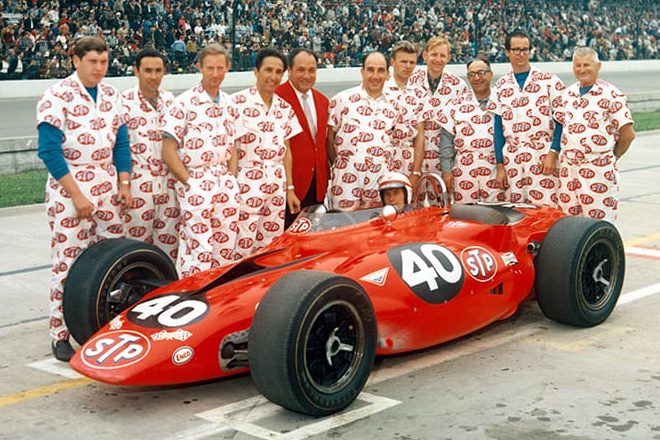 The business acumen of Granatelli paid dividends, literally and figuratively. Within a decade, the company grew from seven employees to 2,000 and was selling more than 100 million cans of the sticky petro elixir. Sales topped $100 million. Andy tagged those omnipresent STP decals with the slogan “The Racer’s Edge.”
The business acumen of Granatelli paid dividends, literally and figuratively. Within a decade, the company grew from seven employees to 2,000 and was selling more than 100 million cans of the sticky petro elixir. Sales topped $100 million. Andy tagged those omnipresent STP decals with the slogan “The Racer’s Edge.”
With his background in racing, Andy knew the marketing power of motorsports, particularly the Indy 500. Throughout the early and mid-1960s, he sponsored or fielded entries in the “Greatest Spectacle of Racing,” none of which found victory lane. It wasn’t until 1967 and 1968 that Granatelli rolled out unique, blindingly fast entries that led to arguably two of the most gut-wrenching disappointments in racing history.
In 1967, Andy entered the STP Paxton turbine car, clandestinely developed racer by Vince and Joseph using a Pratt and Whitney helicopter turbine engine. He recruited star Parnelli Jones to drive, who easily qualified sixth – the first turbine-powered car to start at Indy. Jones dominated, leading 171 of the 200 laps. Then, with only six laps to go, an inexpensive tranny bearing failed. PJ coasted to a stop.
A year later, Granatelli was back with another STP-emblazoned turbine-powered car, this one built by Lotus. With Joe Leonard at the wheel, the car again dominated – until it again broke down, this time within 10 laps of the checkered. Ouch.
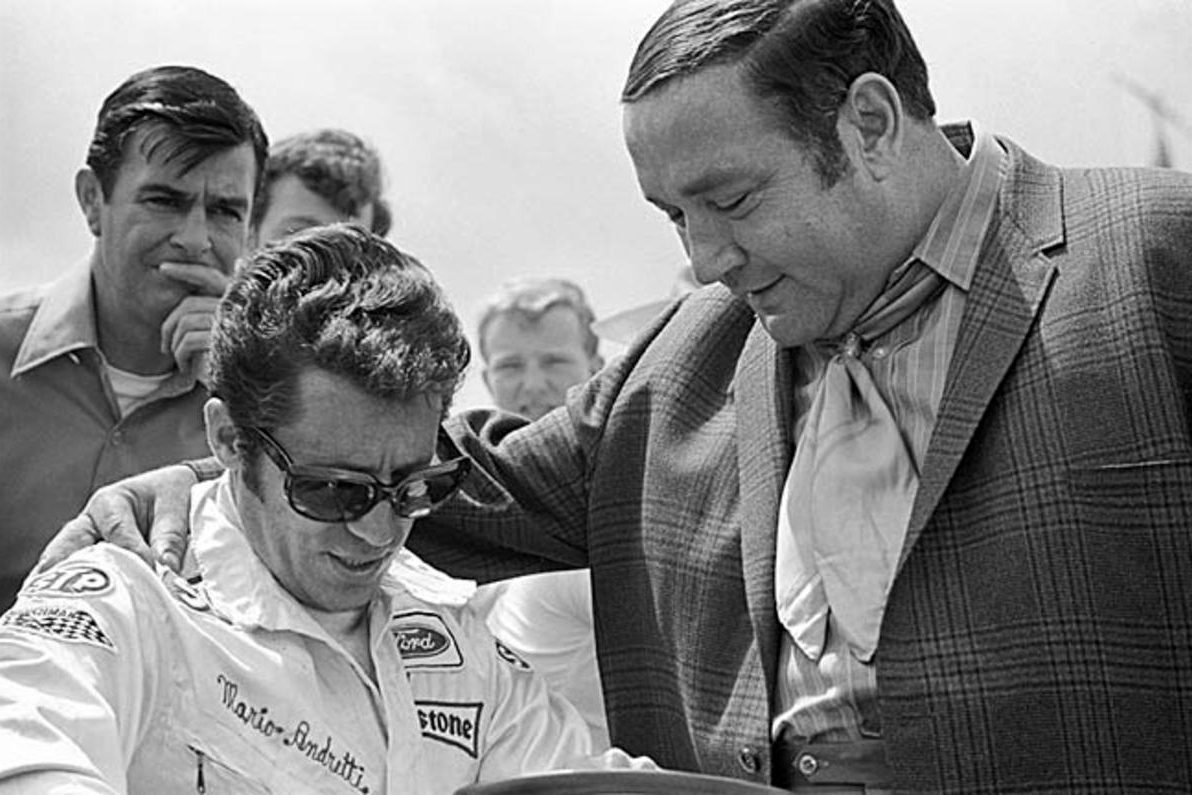 Redemption, though, came the following year. Granatelli entered an innovative four-wheel-drive Lotus for Mario Andretti. After the Lotus was destroyed in a practice crash, Mario jumped in his year-old back-up car and scored the win. In victory lane he earned the Borg-Warner trophy, a swig of milk, and a big ol’ smooch from Granatelli.
Redemption, though, came the following year. Granatelli entered an innovative four-wheel-drive Lotus for Mario Andretti. After the Lotus was destroyed in a practice crash, Mario jumped in his year-old back-up car and scored the win. In victory lane he earned the Borg-Warner trophy, a swig of milk, and a big ol’ smooch from Granatelli.
This three-year run of dominance turbocharged the national awareness of the STP brand. In 1971, though, Consumer Reports declared that STP oil treatment was no more than a worthless oil thickener. The stock price plummeted, and in 1974, Granatelli sold the company for $135 million.
Granatelli last entered a car at Indianapolis in 1974. He also bankrolled Richard Petty in NASCAR from 1972 to 1981. During this span, Petty won four titles and four Daytona 500s – all with the STP logo prominent on The King’s blue machine.
Granatelli passed away in 2013 at the age of 90 in Santa Barbara, California. His career remains legendary and historically significant. Others agree. His resume of accolades includes the International Motorsports Hall of Fame, Motorsports Hall of Fame of America, National Sprint Car Hall of Fame, the National Midget Auto Racing Hall of Fame. Oh, and the Goodguys Legends of Hot Rodding.

